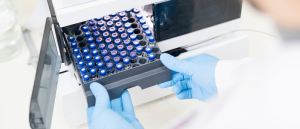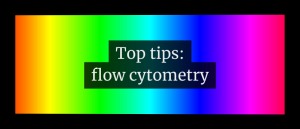
BioTechniques News
Aisha Al-Janabi

Our Assistant Editor, Aisha Al-Janabi, discusses the recent applications of cryogenic electron microscopy (cryo-EM) and cryogenic electron tomography (cryo-ET) to uncover how cells function, as well as how AI is being used to streamline these techniques.
In 2017, the Nobel Prize in Chemistry was awarded to Jacques Dubochet (University of Lausanne; Switzerland), Joachim Frank (Columbia University; NY, USA) and Richard Henderson (MRC Laboratory of Molecular Biology; Cambridge, UK) for the development of cryo-EM, a technique that is able to visualize cellular processes and mechanisms at a resolution that was previously not possible. Cryo-ET is a related and emerging technique, which can resolve subcellular structures and capture cell dynamics.
For both cryo-EM and cryo-ET, samples are flash-frozen before analysis to stabilize and preserve them in a close-to-native state, which remains hydrated. The samples are then studied with an electron microscope to collect 2D images, which are aligned with computational techniques to produce the final image. Many different particles are analyzed in cryo-EM, which are frozen in different orientations, whilst in cryo-ET, a single particle is rotated around an axis and data is sequentially captured.
Observing structural changes in the centromere during cell division
The centromere is a region of the chromosome that plays a key role in cell division via interactions with spindle microtubules. Within the centromere is a complex of multiple proteins called the kinetochore, essential for correct cell division. Researchers at Osaka University (Japan) utilized cryo-EM to study the structural changes that occur in the centromeric region and kinetochore during cell division in chicken cells at an atomic level. [1] [2]
Within chromosomes, DNA is coiled around a core made of proteins called histones to form the nucleosome. The centromeric region contains a histone variant called centromere protein A (CENP-A), which specifies the location of the centromere. Until now, the mechanisms through which CENP-A is deposited at the centromere were unknown.
Cryo-EM analysis revealed that a protein called centromere protein C (CENP-C) binds to CENP-A during mitosis, and this complex acts as a scaffold for the rest of the proteins in the kinetochore. They found that when the cell is not dividing, a period known as interphase, a different protein, KNL2, binds to the centromeres instead of CENP-C. “KNL2 contains a CENP-C-like motif and is a component of the Mis18 complex, a licensing factor for new CENP-A deposition,” explained Honghui Jiang and Mariko Ariyoshi, the lead authors of the study.
 Recent LC–MS platforms for specific applications in drug design and detection
Recent LC–MS platforms for specific applications in drug design and detection
Researchers have created an automated analytical tool to monitor antidepressants levels in patients to reduce the risk of side effects.
The researchers also found that the interaction between KNL2 and the centromere is necessary for new CENP-A deposition during interphase. This process helps to maintain the correct location of the centromere. “We also showed that CENP-C is phosphorylated during mitosis, and phosphorylated CENP-C excludes KNL2 from the KNL2-CENP-A complex,” said Tatsuo Fukagawa, the senior author of the study.
Their findings suggest that the location of the centromere is maintained during interphase through the binding of KNL2 and CENP-A until a phosphate molecule binds to CENP-C as the cells reach mitosis. This leads to preferential binding of CENP-C and CENP-A, forming the kinetochore needed for cell division.
The proteins involved in cell division and the kinetochore are targets for anti-cancer drugs. These structural and mechanistic insights into the centromere and cell division could lead to the design of novel drugs for various diseases, including cancer.
Seeing the mitochondria like never before
The mitochondria are not only the powerhouse of the cell but are also involved in several other critical cellular functions including cell division and cell preservation in response to different types of stress. Mitochondrial dysfunctions have been associated with diseases including Alzheimer’s and different cancers and could be a potential target for treating these diseases. However, visualizing the mitochondria in detail and quantifying these changes has remained a challenge. [3] [4]
Researchers at the Scripps Research Institute (CA, USA) have created a computational toolkit to process imaging data from cryo-ET, which they called the “surface morphometrics toolkit”. They demonstrated its potential by mapping the mitochondria under endoplasmic reticulum stress, which often occurs in neurodegenerative diseases.
There are typically thousands of mitochondria present in each cell, organelles that have a distinctive structure with an outer membrane where biochemical reactions occur and their own genome. Scientists have established that the appearance of mitochondria can change depending on their activity and the type of stress in the cell and could therefore be used as markers of cell conditions.
Combining cryo-ET with this new tool offers the possibility of detecting and quantifying small structural changes in mitochondria. “It allows us essentially to turn the beautiful 3D pictures of mitochondria we can get from cryo-ET into sensitive, quantitative measurements – which we can potentially use to help identify the detailed mechanisms of diseases, for example,” explained Benjamin Barad, the co-author of the paper.
 10 tips for successful flow cytometry
10 tips for successful flow cytometry
William Telford, Senior Associate Scientists in the National Cancer Institute’s Flow Cytometry Core Laboratory, shares his advice for successful flow cytometry in this handy guide.
To demonstrate the potential of the surface morphometrics toolkit, the researchers mapped the structural details of individual mitochondria when cells are under endoplasmic reticulum stress. This revealed that features including the curvature of the inner membrane and the minimum distance between the inner and outer membranes changed when cells were experiencing this stress.
The lab group will now apply this toolkit to study how mitochondria respond to different cellular stresses as well as other changes induced by disease, toxins, infections and pharmaceuticals.
“We can compare the effects on mitochondria in cells treated with a drug versus the effects on untreated mitochondria, for example,” explained Michaela Medina, a co-author of the study. “And this approach is not limited to mitochondria – we can also use it to study other organelles within cells.”
Speeding up cryo-ET analysis with AI
Images from cryo-ETs look like patterns faintly drawn in the sand, which trained specialists can interpret to reveal the location and shape of cellular organelles and molecular complexes; however, this is a time-consuming process. To overcome this limitation, researchers at the European Molecular Biology Laboratory (Heidelberg, Germany) have created an AI-based method to annotate cellular structures more easily. [5] [6]
The deep-learning framework, called DeePiCt (Deep Picker in Context), combines two types of convolutional neural networks to study the location and shape of cellular organelles as well as the structure of molecular complexes. The first neural network is trained to segment cellular structures, like organelles, and works in 2D slices and the other is trained to segment a particle of interest, for example a ribosome, and works in the 3D space of the tomogram image.
“DeePiCt – and in particular the trained models that we provide – make it possible for anyone to detect specific particles and structures of interest among the noisy background of their own tomograms. For me, this is one of the best outcomes of our work,” said Judith Zaugg, the senior author of the paper.
Once trained, the network can find patterns and differentiate objects in a cryo-ET image and label organelles and molecular complexes faster than trained specialists. The researchers found that DeePiCt could recognize specific particles in a set of tomograms and then identify the same set in a previously unseen tomogram, indicating it can analyze cells of different sample types.
“Now we have shown that this works, we are excited about making the software available to the research community,” commented Julia Mahamid, a co-author of the study. “We hope that such deep-learning approaches will become established as a gold standard in cryo-electron tomography.”
The post Revealing the inner workings of cells with cryo-EM and cryo-ET appeared first on BioTechniques.
Full BioTechniques Article here
Powered by WPeMatico
